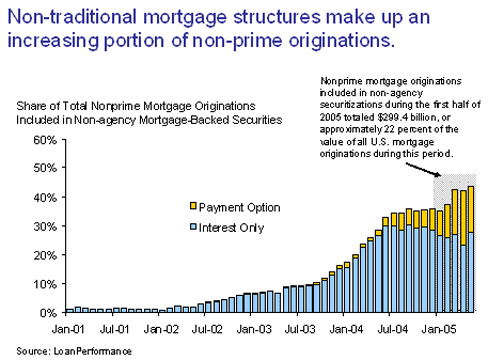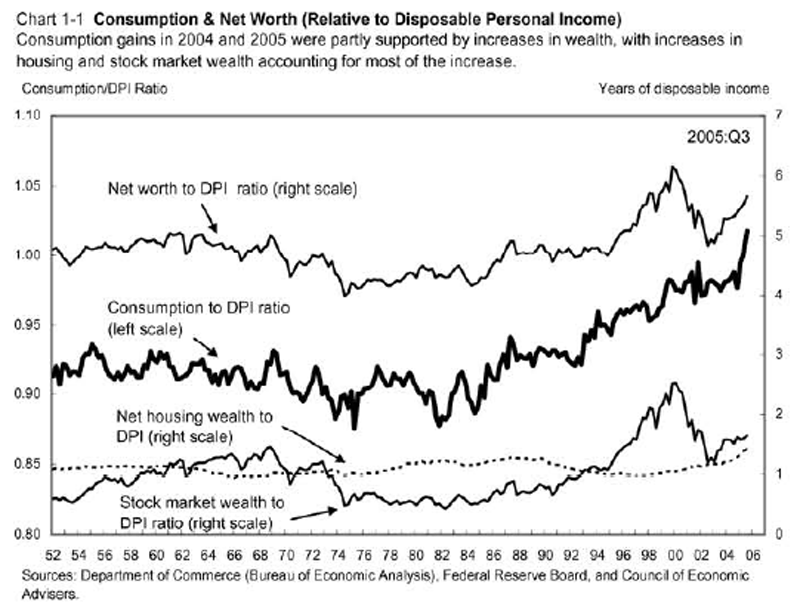Many eyes are on the U.S. real estate market. “During the past five years, home prices have risen at an annual rate of 9.2 percent,” according to the 2006 Economic Report of the President released on February 13. Was this growth normal? We need the historical context of home price increases to answer this question.
The media coverage of the report sidestepped the historical context altogether. For the relevant historical data on recent home prices, we turn to economist Dean Baker, co-director of the Center for Economic and Policy Research in Washington, DC.
“Through the post-war period 1950 to 1995, house prices grew at approximately the same rate as the prices of other goods and services,” Baker wrote last July.
The Consumer Price Index of goods and services rose at an annual rate of 3.4 percent in 2005, a five-year high, according to the U.S. Bureau of Labor Statistics. Between 2001 and 2005, the CPI annual rate, on average, was 2.56 percent. Put the aforementioned annual house price growth rate of 9.2% in this context. House prices rose at more than three and a half times the rate of consumer price increases.
Some economists have a technical term for the U.S. real estate market today: a bubble. They are part of — not apart from — the national economy.
Recall the stock market bubble of the 1990s. Share prices climbed to record highs, cheered on by overheated rhetoric of a “new” economy. An exception to cheerleading came from Federal Reserve Chairman Alan Greenspan, who mentioned concern about investors’ “irrational exuberance” — but only on page eight during a 10-page speech. Eventually, the bubble popped, wiping out paper gains.
The media having faded out the memory of the stock market bubble and its aftermath, tens of thousands of people across the country are buying overpriced new homes. Many first-time homebuyers are scraping by to pay their monthly mortgages. For such homebuyers, losing a job or accepting a lower-paying job after unemployment will make it tough — sometimes impossible — to make ends meet. Corporate downsizing and outsourcing are now even more menacing than before.
The rapid growth of risky mortgages — subprime, no-down-payment, low-documentation, interest-only, “payment-option,” and so on — in recent years is another danger signal.

SOURCE: Federal Deposit Insurance Corporation, “Economic Conditions and Emerging Risks in Banking: A Report to the FDIC Board of Directors,” 1 November 2005
Mortgage payments that looked manageable in a period of relatively low interest rates and ever rising house prices can easily overwhelm the borrowers of risky mortgages when interest rates soar or house prices plummet.
Other homeowners have used the increasing market value of their homes to take out new loans. For some, second mortgages expand their debt. They are borrowing and consuming with the expectation of a future rise in their home prices. Such spending based on lending instead of rising real wages (what people’s pay can actually buy) will cool when the hot housing market loses heat.

SOURCE: “Economic Report of the President,” February 2006, p. 30
Building of some 2 million new homes began in 2005. Some 25 percent of these new starts were bought by real estate speculators with expectations of selling at higher prices down the road, according to Baker of the CEPR.
The
February 13 White House report predicted a soft — rather than hard — landing: “A gradual slowing of homebuilding appears more likely than a sharp drop because the elevated level of house prices will sustain homebuilding as a profitable enterprise for some time.”
The soft-landing scenario may or may not come true. Like bubbles of the past, uncertainty rules the future of the U.S. market for real estate. It cannot be otherwise, with so many actors and factors involved. Nobody — not even the Fed — is really in control.
 Seth Sandronsky is a member of Sacramento Area Peace Action and a co-editor of Because People Matter, Sacramento’s progressive paper. He can be reached at <[email protected]>.
Seth Sandronsky is a member of Sacramento Area Peace Action and a co-editor of Because People Matter, Sacramento’s progressive paper. He can be reached at <[email protected]>.
